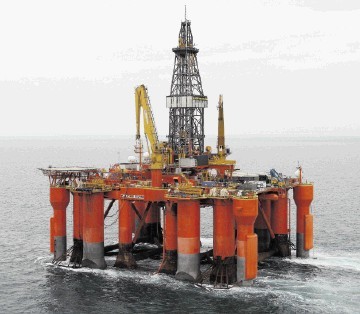
US drillers have taken a record number of oil rigs out of service in the past six weeks as OPEC sustains its production, sending prices below $50 a barrel.
The oil rig count has fallen by 209 since December 5, the steepest six-week decline since Baker Hughes Inc. (BHI) began tracking the data in July 1987. The count was down 55 this week to 1,366.
Horizontal rigs used in US shale formations that account for virtually all of the nation’s oil production growth fell by 48, the biggest single-week drop.
Analysts including HSBC Holdings Plc say the decline shows that the Organization of Petroleum Exporting Countries is winning its fight for market share and slowing the growth that’s propelled US production to the highest in at least three decades.
OPEC’s decision not to curb its output amid increasing supplies from the US and other countries has driven global oil prices down 58 percent since June.
“OPEC’s strategy is working, and it will be obvious in US production by midyear when growth from shale plays will come to a halt,” James Williams, president of energy consulting company WTRG Economics in London, Arkansas, said. “You can imagine the impact on any industry from a 50% impact on sales.”
West Texas Intermediate for February delivery rose $2.44 on Friday to settle at $48.69 a barrel on the New York Mercantile Exchange, up 33 cents for the week, the first gain since November. Brent, the international benchmark, rose $1.90 to end the day at $50.17 on the London-based ICE Futures Europe Exchange, a weekly gain of 6 cents for the front-month contract.
“Prices are being forced toward levels that would force outright shut-ins in high-cost areas, mainly in Canada and the US,” Societe Generale SA (GLE) analysts including Mark Keenan, its head of commodities research for Asia in Singapore, said in a research note January 14.
The slump in oil rigs has yet to stop the unprecedented growth in US oil production, which added 60,000 barrels a day in the week ended Jan. 9 to 9.19 million, Energy Information Administration data show. That’s the most in weekly data since at least 1983.
Meanwhile, projects are being canceled and budgets cut around the globe. Royal Dutch Shell Plc (RDSA) called off a $6.5 billion project in Qatar.
Contract drillers Helmerich & Payne Inc. (HP) and Pioneer Energy Services Corp. (PES) lost U.S. rig contracts. Mexican oil service companies cut more than 10,000 people. Suncor Energy Inc. (SU) fired workers in Canada.
The Permian Basin of Texas and New Mexico, the largest US oil field, lost the most rigs this week, declining by 15 to 487, Baker Hughes data show.
Rigs in Texas’s Eagle Ford formation dropped 12 to 185, and the Williston Basin, home of North Dakota’s prolific Bakken formation, declined by six to 165.
“We are seeing leading indicators of weak prices starting to drive the rebalancing that OPEC is seeking to achieve,” HSBC analysts including Gordon Gray said in a research note January 15.
Rigs drilling for natural gas in the US dropped by 19 to 310. Inventories of the heating fuel in the lower 48 states totaled 2.853 trillion cubic feet last week, 11% above year-earlier levels.
Natural gas for February delivery dropped 3.1 cents to settle at $3.127 per million British thermal units on the Nymex Friday, down 29% in the past year.
Recommended for you
